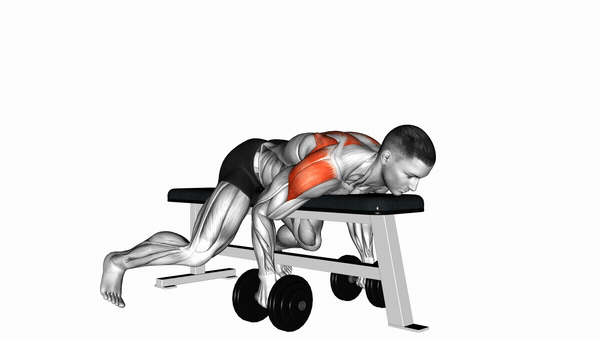To perform Dumbbell Lying Rear Lateral Raises, you will need the following equipment:
- Dumbbells
- Incline bench (optional)
The primary and secondary muscles targeted by this exercise include:
- Primary: Rear Deltoids
- Secondary: Upper Trapezius, Rhomboids
When it comes to enhancing your shoulder workout, variations of the Dumbbell Lying Rear Lateral Raise can be incredibly beneficial. Here are a few notable alternatives that target similar muscle groups and movement patterns:
-
Dumbbell Incline Rear Lateral Raise: This variation involves lying on an incline bench, which allows for a different angle of resistance and can help isolate the rear deltoids more effectively. It promotes better posture and shoulder stability.
-
Dumbbell Lying One-Arm Rear Lateral Raise: This exercise focuses on one arm at a time, which can help correct muscle imbalances and improve overall shoulder strength. It emphasizes control and precision, making it a great addition to your routine.
-
Dumbbell Rear Lateral Raise with Head Support: By using a bench for head support, this variation can help maintain proper form and reduce strain on the neck. It allows for a controlled movement that targets the rear deltoids effectively.
Each of these variations can enhance your shoulder development by providing different angles and focusing on muscle engagement. Experiment with these exercises to see which one works best for you and fits into your training regimen!
Incorporating Dumbbell Lying Rear Lateral Raises into your workout routine is a fantastic way to enhance shoulder strength and aesthetics. By mastering the proper technique and avoiding common pitfalls, you'll be on your way to achieving balanced shoulder development. Don't hesitate to explore alternative exercises to keep your workout varied and effective!
Load More










